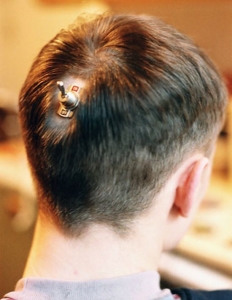
It’s an attitude that permeates business, where some people and departments are seen as needing to be creative, like marketing and new product development, while others not so much, like book keeping and operations. Creativity is too often seen as somehow separated from the “real” work of the organization. We hold brainstorming sessions, being careful to set aside only so much time for being creative, as though it’s something extra that we can’t afford to do too often.
Even those who consider themselves to be highly creative often talk about what inspires them, or what kind of environment is most conducive to being creative, as though their ability to create ebbs and flows. It’s a perception that’s reinforced by disciplines such as creative problem solving, in which we may hold an ideation session…and then go back to our normal routine. Even innovative companies like Google and 3M with their 20% time and 15% time respectively, for pursuing personal ideas, (something I applaud) may be fueling the perception that creativity is something you go do, rather than something you have.
We don’t talk about our intelligence as though it’s something we use from time to time, and then turn off and become stupid when we don’t need it. No one would dare suggest facilitating a session that would help make everyone smart for awhile. We don’t think of being in good physical shape as something we only need to do when we have something heavy to lift, or when we need to run somewhere because we’re late. We treat our intelligence and our fitness as attributes we carry with us all the time, but for some reason not our creativity.
Maybe we’re confusing creativity with those brief moments when we actually experience some “Aha,” forgetting that real creativity encompasses so much more than that, including imagination, inspiration, observation, curiosity, investigation, reflection, connection, experimentation, ideation, incubation, contemplation, recombination, exploration and execution. We forget that a single creative accomplishment may span days, weeks, even years.
If we want sustained robust innovation in our companies and economies, at the very least we need to stop treating our creativity like something with an on/off switch. Creativity, in all it’s forms (See list above.), should be considered the norm in every meeting and conversation and proposal and performance review, every hiring decision and promotion, every executive conference and strategy session. We need to recognize creativity as the sustained cognitive function it is and the sustained business function it needs to become…always on.
Get the new Special Report, Innovation Essentials: The Four Greatest Ways We stop Ourselves…In Business and in Life. Download a free copy at: http://www.insightfusion.com/SpecialReport.asp

Leave A Comment